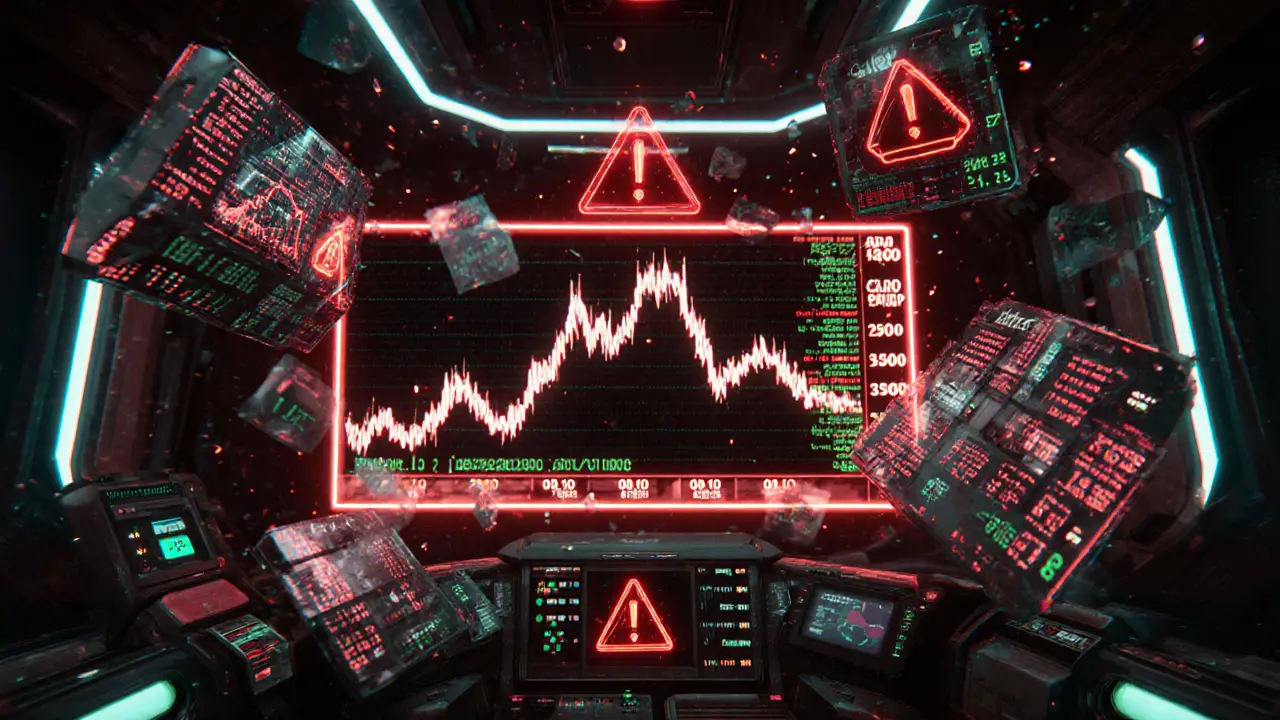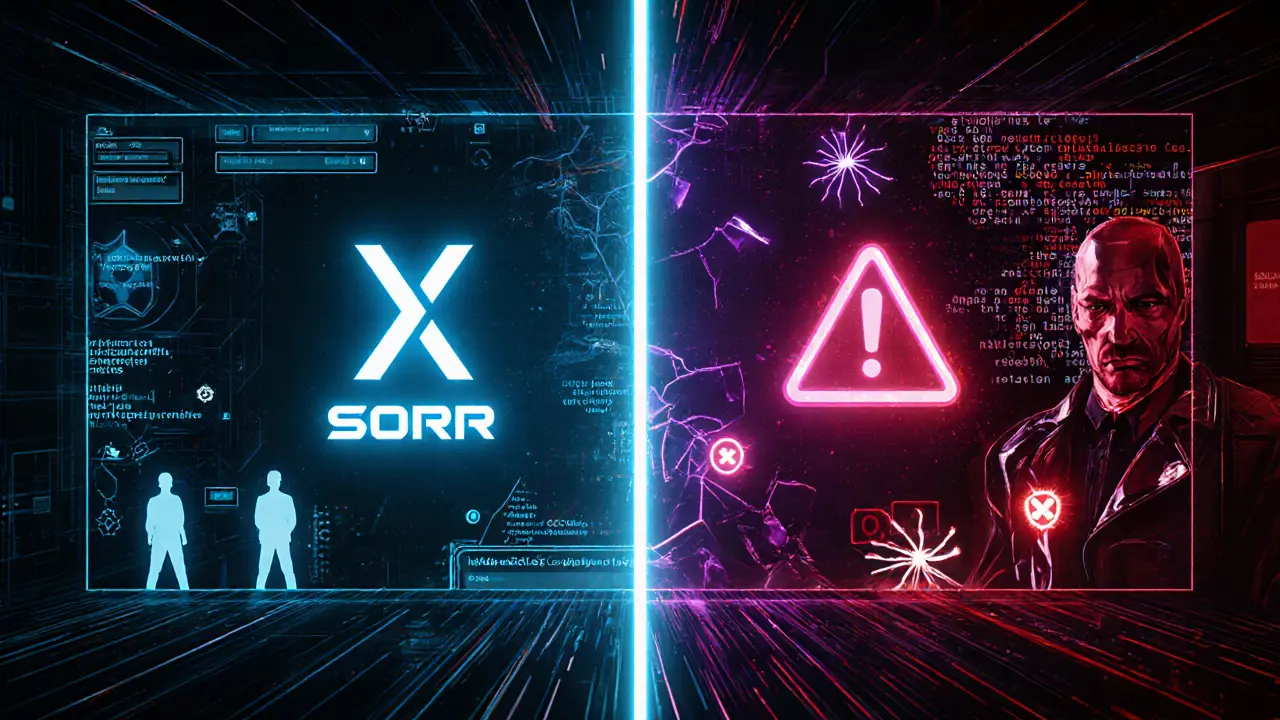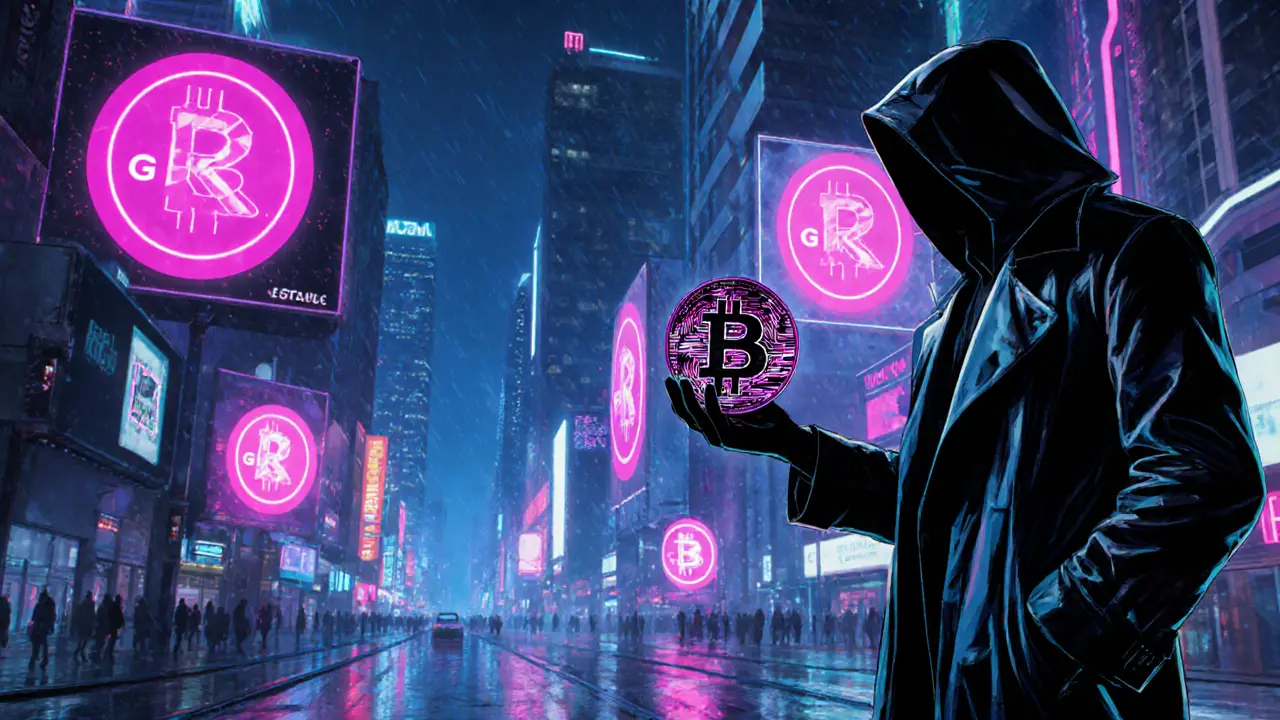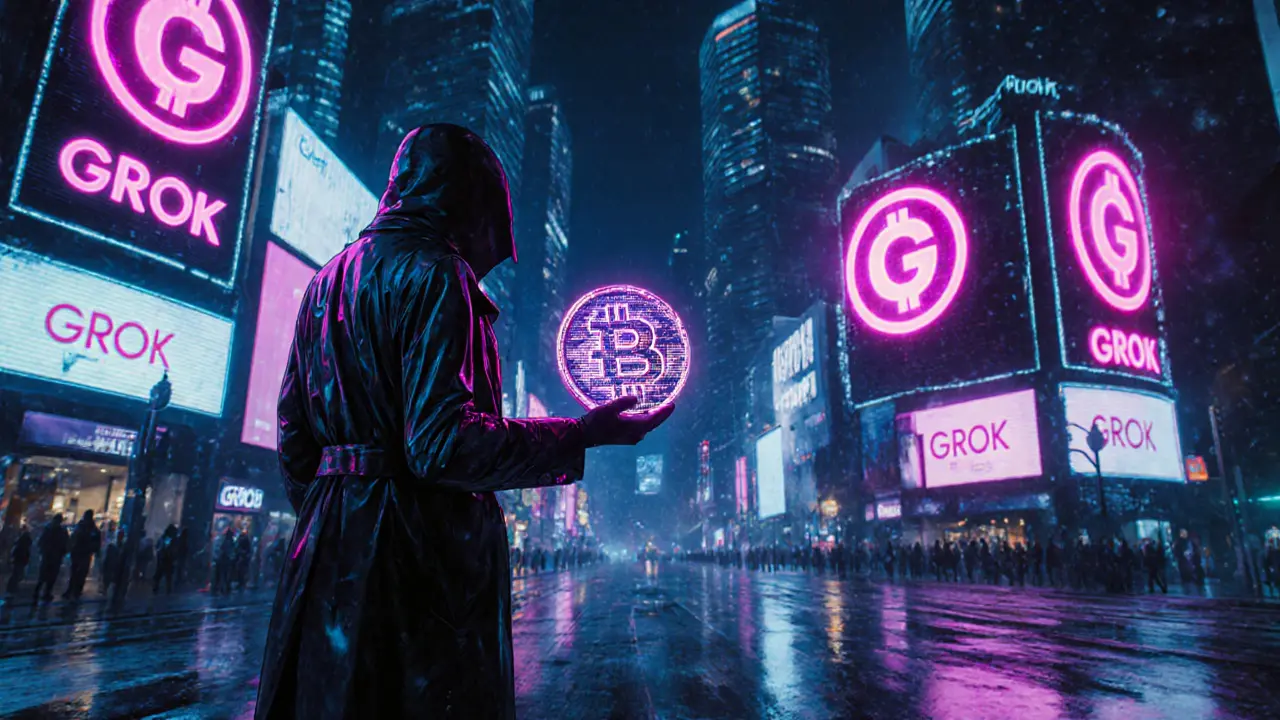Crypto Token Risk Calculator
Assess Your Crypto Token's Risk Level
Evaluate potential scam tokens using key indicators from industry standards. This tool helps you identify red flags before investing.
Token Risk Assessment
Select the indicators that apply to the token you're evaluating:
Risk Assessment Results
Risk Assessment
This token shows 0 red flags. Based on the indicators selected, this token has Low Risk status.
Key findings: This token has no verified official website, which is a critical red flag for legitimate projects.
Recommended action: Avoid investing in this token. Consider moving any holdings to a secure wallet immediately.
What’s the real story behind SORA GROK? The name sounds like it belongs to a legit blockchain project, but the token hides a maze of red flags, wild price swings, and outright deception. If you’ve seen it pop up on price‑trackers or social feeds, you’re probably wondering whether it’s a hidden gem or a trap. This guide pulls apart the hype, shows the hard data, and tells you exactly what to look out for before you click ‘buy.’
Key Takeaways
- SORA GROK (GROK) is an ERC‑20 token on Ethereum that falsely claims ties to the legitimate SORA blockchain.
- Multiple reputable sources flag it as a high‑risk, deceptive project with classic pump‑and‑dump patterns.
- Price data varies wildly between exchanges, indicating possible market manipulation.
- There is no verifiable development team, roadmap, or real utility behind the token.
- Investors should treat GROK as a scam token and avoid any exposure.
What is SORA GROK (GROK) really?
GROK (ticker GROK) is marketed as a cryptocurrency that supposedly operates within the SORA ecosystem. In reality, the token lives on Ethereum as a standard ERC‑20 contract (address 0x2bB84fd8F7eD0FfAe3da36AD60d4D7840bdeEADa) and has no technical integration with the genuine SORA blockchain.
The real SORA network, built with Substrate and part of the Polkadot ecosystem, uses XOR as its native governance token. The GROK token’s claim of “facilitating governance” on SORA is therefore false.

How the token sells itself
Marketing copy on various listing sites tells a story of “enhanced functionality” and “participation in protocol upgrades.” This language mirrors legitimate projects, but there’s no whitepaper, GitHub repo, or development team to back it up. Even the name “GROK” borrows from Elon Musk’s xAI project, adding a layer of false credibility.
Typical promotional channels include:
- Telegram groups that push sudden “pump” alerts.
- Discord servers promising “early access” to sky‑high returns.
- Social media hype posts that quote inflated price spikes without context.
Technical snapshot
Besides being an ERC‑20 token, the contract shows no special functions - no anti‑rug‑pull mechanisms, no governance modules, just the standard transfer, approve, and balance methods. That simplicity is typical for “shitcoins” that exist solely for speculative trades.
Key technical attributes:
- Blockchain: Ethereum
- Contract address:
0x2bB84fd8F7eD0FfAe3da36AD60d4D7840bdeEADa - Total supply: 1,000,000,000 GROK (reported, but actual circulating supply is unclear)
- No documented road‑map or development milestones.

Market data - why the price looks insane
Across major trackers the price jumps between $0.012 and $0.04 within hours, with 24‑hour changes ranging from a 99.86% drop to a 460% surge. Trading volume figures also contradict each other, swinging from $470k on Coinbase to over $900k on Binance.
| Exchange | Price (USD) | 24h Volume (USD) | Market Cap (USD) |
|---|---|---|---|
| Coinbase | 0.01298 | 704,150 | 5,560,000 |
| Binance | 0.03952 | 911,423 | - (reported 0) |
| LiveCoinWatch | 0.01297 | 736,200 | 5,570,000 |
Such discrepancies are classic signs of price manipulation. When a token’s reported market cap swings from zero to millions in minutes, you can’t trust the data.
SORA GROK vs. the real SORA blockchain
| Aspect | SORA GROK (GROK) | SORA blockchain (XOR) |
|---|---|---|
| Underlying network | Ethereum (ERC‑20) | Polkadot ecosystem (Substrate) |
| Native token | GROK | XOR |
| Official website | None verified | sora.org |
| Development team | Anonymous / no proven team | Publicly disclosed core team |
| Use case | Claims governance for SORA (false) | Governance, DeFi, cross‑chain swaps |
| Risk rating | High‑risk, deceptive (Traders Union) | Low‑to‑moderate (established project) |
The table makes it clear: GROK is a sham built on a completely different blockchain, with no real connection to the authentic SORA ecosystem.

What experts are saying
Analysis from Traders Union labels GROK as a “high‑risk and deceptive project.” CoinPaprika and LiveCoinWatch provide the conflicting market data that fuels pump‑and‑dump cycles, but none of them endorse the token. No major news outlet (CoinDesk, Cointelegraph) has covered GROK beyond price‑feed listings.
Red flag checklist from reputable analysts includes:
- No verifiable whitepaper or code repo (GitHub empty).
- Anonymous team and no social media presence beyond hype groups.
- Extreme price volatility and contradictory volume numbers.
- Use of brand names (SORA, GROK) without permission.
- Frequent “all‑time‑high” spikes followed by 99% drops.
How to spot scam tokens like GROK
- Check the official website of the claimed project. If the token’s name doesn’t appear there, it’s likely a copycat.
- Verify the contract on Etherscan and look for audit reports. Absence of an audit is a warning sign.
- Compare price data across at least three reputable trackers. Large mismatches suggest manipulation.
- Search for the token on reputable news sites. If you only find price‑feed listings, treat it with suspicion.
- Ask the community: reputable forums (r/CryptoCurrency, BitcoinTalk) often have warning threads for scam tokens.
Following these steps can save you from losing money on projects that have no real value.
Frequently Asked Questions
Is SORA GROK (GROK) a legitimate token?
No. GROK is an ERC‑20 token that falsely claims to be part of the SORA ecosystem. Multiple analysts flag it as a high‑risk, deceptive project with no real utility.
Can I trade GROK on major exchanges?
Only a few platforms list price data for GROK, and none list it as a supported trading pair. The token mainly appears on decentralized exchanges with very low liquidity.
What red flags should I look for?
Key signs include anonymous developers, no whitepaper, wildly varying price/volume data, claims of association with established projects without any official acknowledgement, and frequent pump‑and‑dump price spikes.
How does GROK differ from the real SORA token (XOR)?
GROK runs on Ethereum, has no technical link to the SORA blockchain, and uses a different ticker. XOR is the native governance token of the Substrate‑based SORA network, backed by an open development team and real DeFi use cases.
Should I ever consider buying GROK?
Given the lack of utility, anonymous creators, and consistent warnings from analysts, the safest move is to avoid GROK entirely. If you already hold it, consider moving the tokens to a secure wallet and withdrawing them before liquidity dries up.
Bottom line: the allure of a “big pump” can be tempting, but with SORA GROK the odds are stacked against you. Stick to tokens with transparent teams, verifiable code, and real use cases - that’s the only way to protect your crypto stash.


shirley morales
October 14, 2025 AT 08:09Your naive enthusiasm for scam tokens is disgraceful.
Mandy Hawks
October 18, 2025 AT 09:22The core problem you ignore is that projects like GROK thrive on the illusion of legitimacy. By copying respected brand names they exploit the trust of newcomers. The absence of any verifiable code or a public roadmap should be a red flag. When you see wildly divergent price data across exchanges, that’s classic pump‑and‑dump behavior. Investors who chase those spikes often end up with worthless tokens. A cautious approach means checking Etherscan for audit reports. If none exist, walk away. Your excitement blinds you to these fundamentals.
Scott G
October 22, 2025 AT 10:36Upon reviewing the available documentation, it becomes evident that the SORA GROK token lacks any substantive technical foundation. The contract address reveals a standard ERC‑20 implementation without any specialized governance mechanisms. Moreover, the claimed affiliation with the SORA ecosystem is unsupported by any official statement from the SORA development team. The market data inconsistencies further undermine confidence in the token’s credibility. In light of these observations, a prudent investor would allocate capital elsewhere.
VEL MURUGAN
October 26, 2025 AT 10:49Exactly, the numbers on Coinbase versus Binance are contradictory enough to suggest fabricated volume. The token’s market cap oscillates between zero and several million dollars within minutes, a hallmark of manipulative listings. No reputable audit has been published, and the code lacks any anti‑rug‑pull features. Such red flags are sufficient to dissuade even the most optimistic participant.
Russel Sayson
October 30, 2025 AT 12:02Let me break down why SORA GROK is a textbook example of a crypto scam, step by step. First, the token masquerades as part of the reputable SORA ecosystem while residing on Ethereum, a blatant identity theft that confuses newcomers. Second, the developers remain hidden behind anonymity, offering no whitepaper, no GitHub repository, and no verifiable roadmap, which is the classic hallmark of a rug‑pull project. Third, the price charts are a roller coaster of artificial spikes, with $0.012 on one exchange and $0.04 on another within the same hour, indicating coordinated pump‑and‑dump schemes. Fourth, volume figures are wildly inconsistent; Coinbase reports $700k while Binance shows $900k, a discrepancy that cannot be explained by normal market activity. Fifth, there is a total lack of coverage from reputable news outlets-no CoinDesk, no Cointelegraph, just price‑feed listings that serve as a veneer of legitimacy. Sixth, the token’s contract code is a vanilla ERC‑20 with no special functions, meaning there are no safeguards against malicious withdrawals. Seventh, the community hype is generated solely by Telegram and Discord groups that push “buy now” alerts without providing any substantive analysis. Eighth, the token’s name and branding borrow from well‑known projects like SORA and even Elon Musk’s xAI, a deliberate strategy to piggyback on existing trust. Ninth, the market cap jumps from zero to millions in minutes, a clear sign that the data is being fabricated or heavily manipulated. Tenth, the token is not listed on any major regulated exchange, limiting liquidity and making it easier for manipulators to control the market. Eleventh, the token’s scarcity is questionable; the reported total supply is one billion, yet the circulating supply is never disclosed, allowing the creators to dump large amounts at will. Twelfth, the risk calculators you see on the page simply echo the red flags you should have noticed yourself, offering no new insight. Thirteenth, the overall sentiment from analysts at Traders Union and other reputable entities labels GROK as high‑risk and deceptive. Fourteenth, the only practical advice that emerges from this analysis is to stay far away from GROK, secure any holdings you might have, and move them to a hardware wallet if possible. Finally, remember that in the crypto space, if something sounds too good to be true, it almost certainly is, and GROK fits that profile perfectly.
Isabelle Graf
November 3, 2025 AT 13:16Spreading hype for a token riddled with deceit is morally bankrupt.
Millsaps Crista
November 7, 2025 AT 14:29Listen up, if you’re tempted by the crazy price jumps, step back and run a sanity check. Verify the contract on Etherscan, look for an audit, and ask yourself if any reputable source backs the project. If the answers are no, cut your losses now and protect your portfolio. It’s better to miss a potential pump than to get burned by a rug‑pull.
Matthew Homewood
November 11, 2025 AT 15:42Sometimes the fear of missing out blinds us to the deeper question of why we chase such volatility. Reflecting on our own motivations can reveal that a steady, well‑researched investment strategy often yields more lasting fulfillment than chasing fleeting spikes.
Shane Lunan
November 15, 2025 AT 16:56All that hype looks like a meme, not real finance.
Jeff Moric
November 19, 2025 AT 18:09It’s easy to get swept up in the excitement, but taking a moment to verify facts can save a lot of regret later. Let’s all encourage each other to do proper research.
Bruce Safford
November 23, 2025 AT 19:22Yo, they’re probably using secret bots to fake the volume and the whole thing is a front for the deep‑state crypto cartel. I’ve seen the same pattern on other “new” tokens that vanish overnight. The fact that SORA itself never mentions GROK is a clue they’re covering it up. Keep your eyes open, the truth is hidden in the noise.